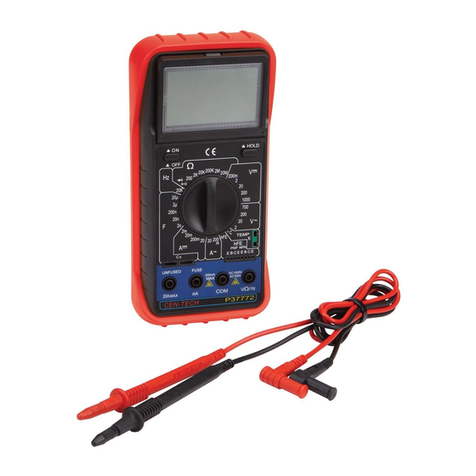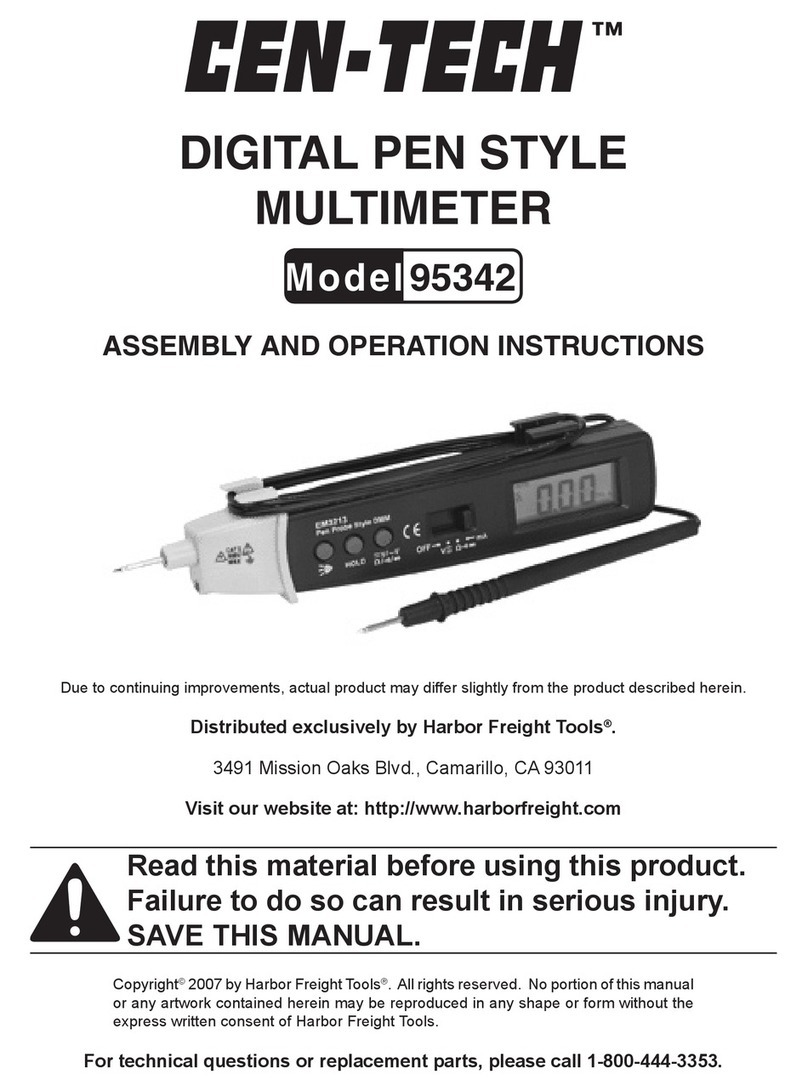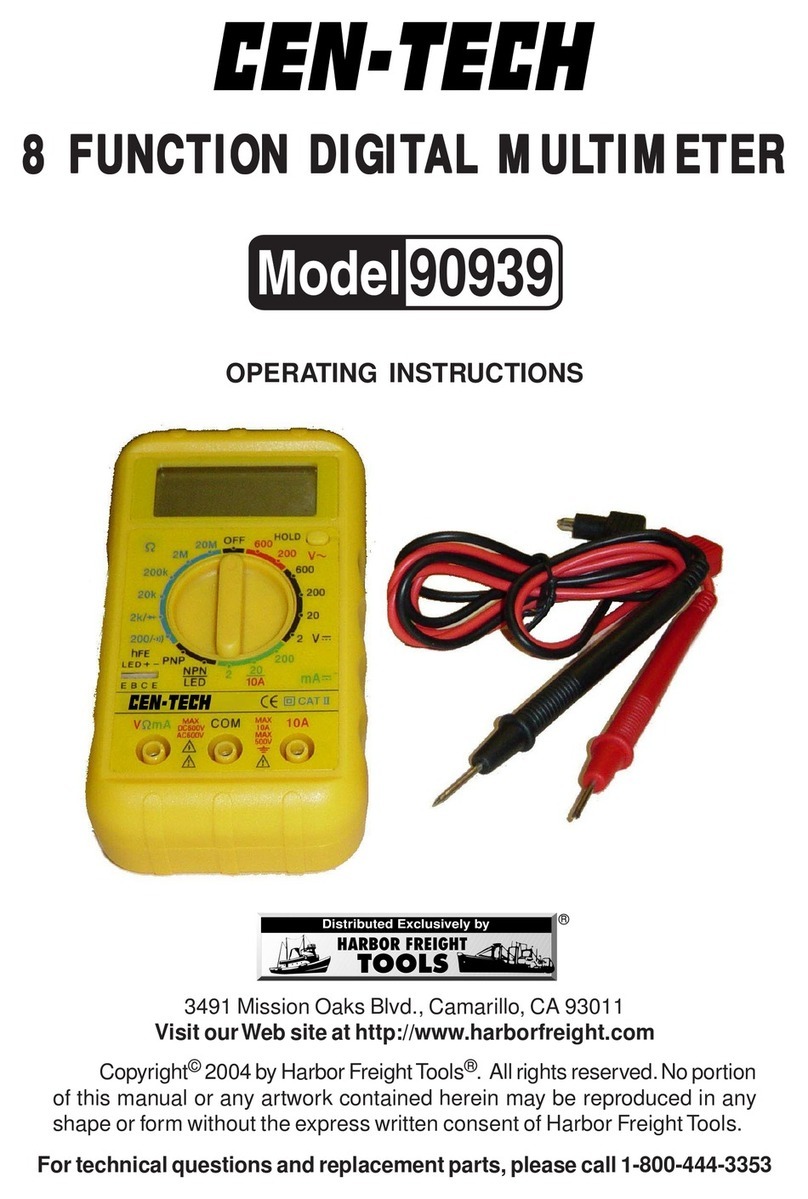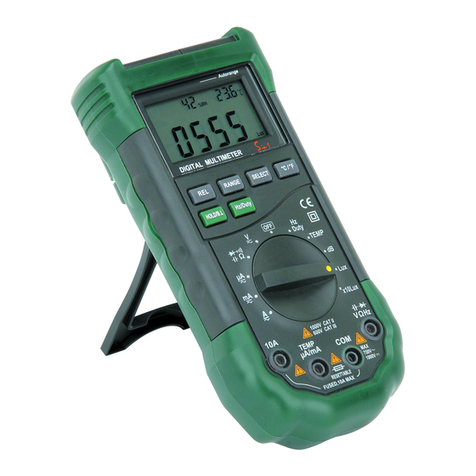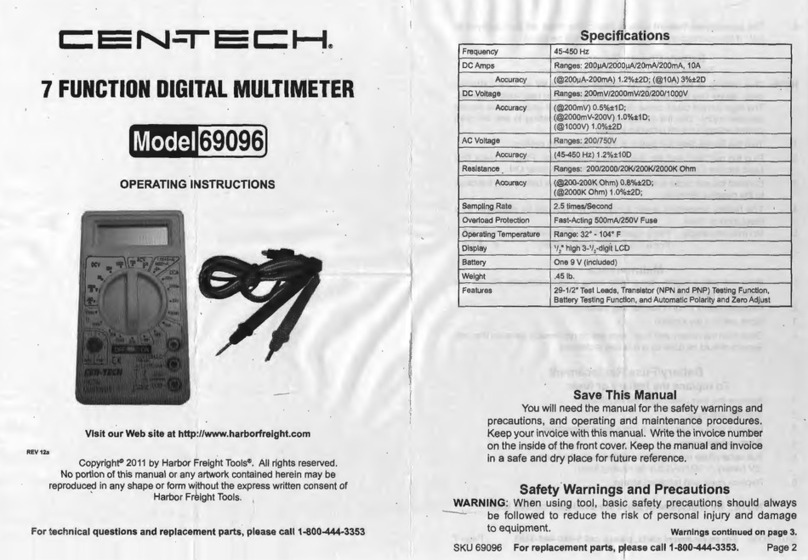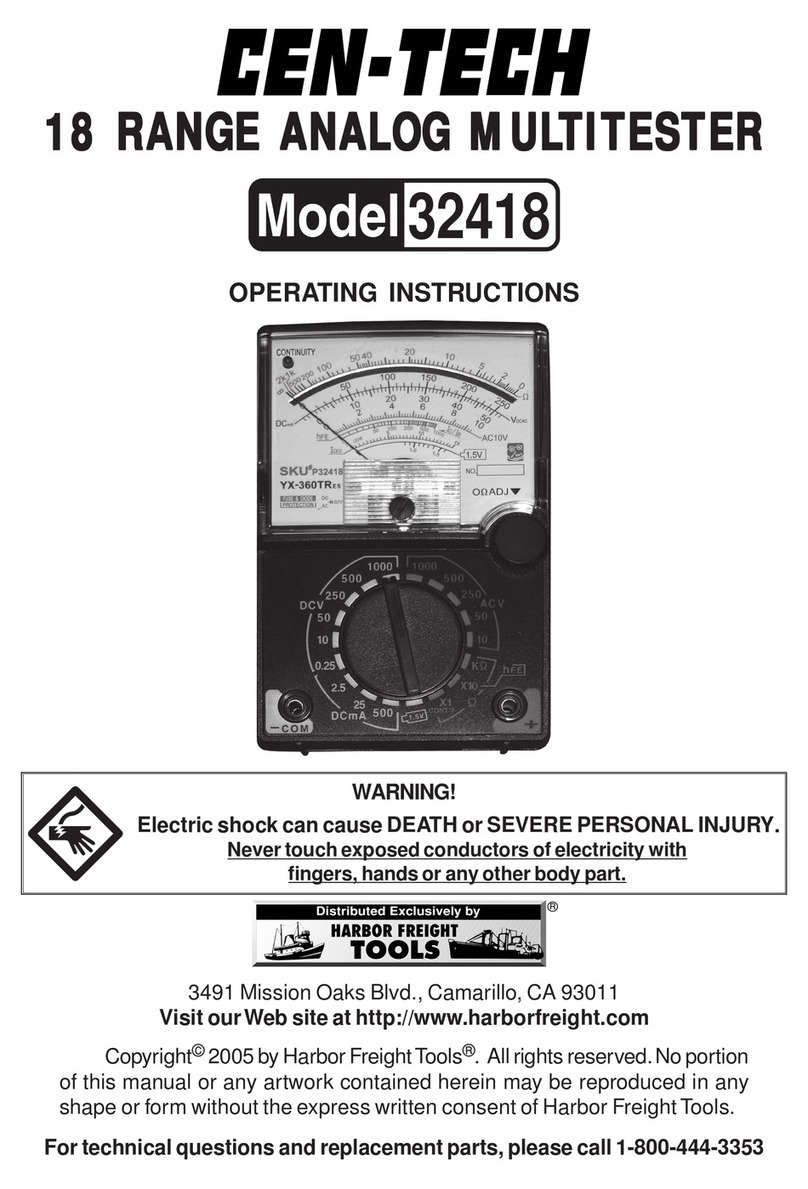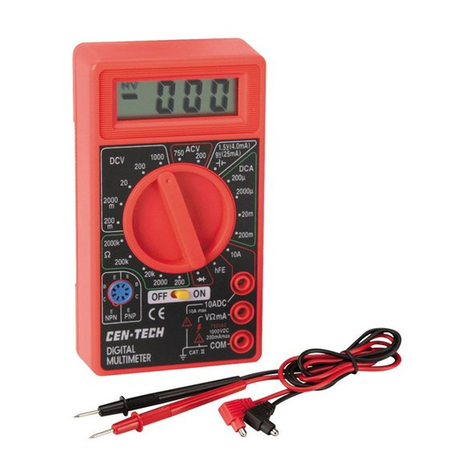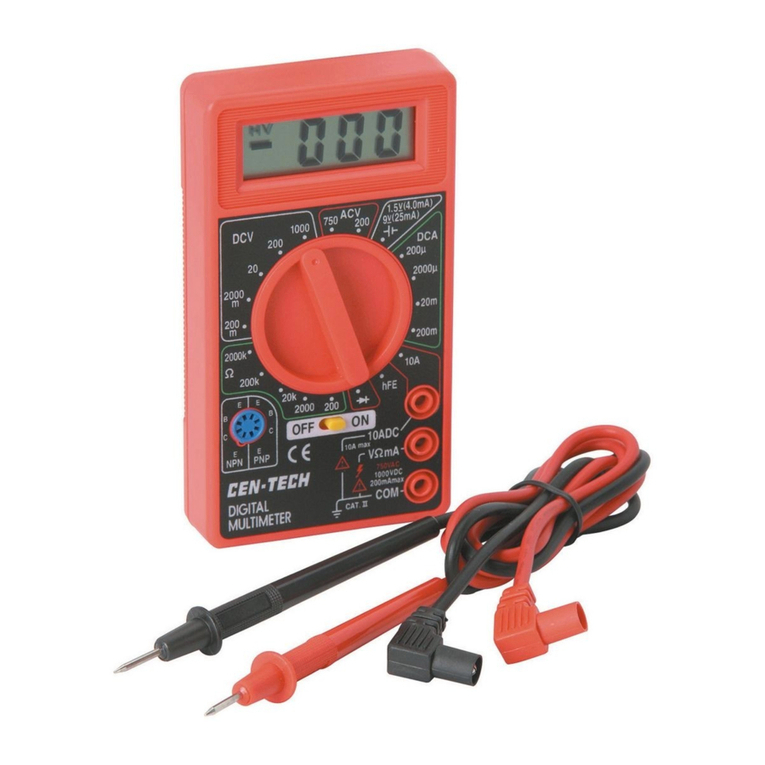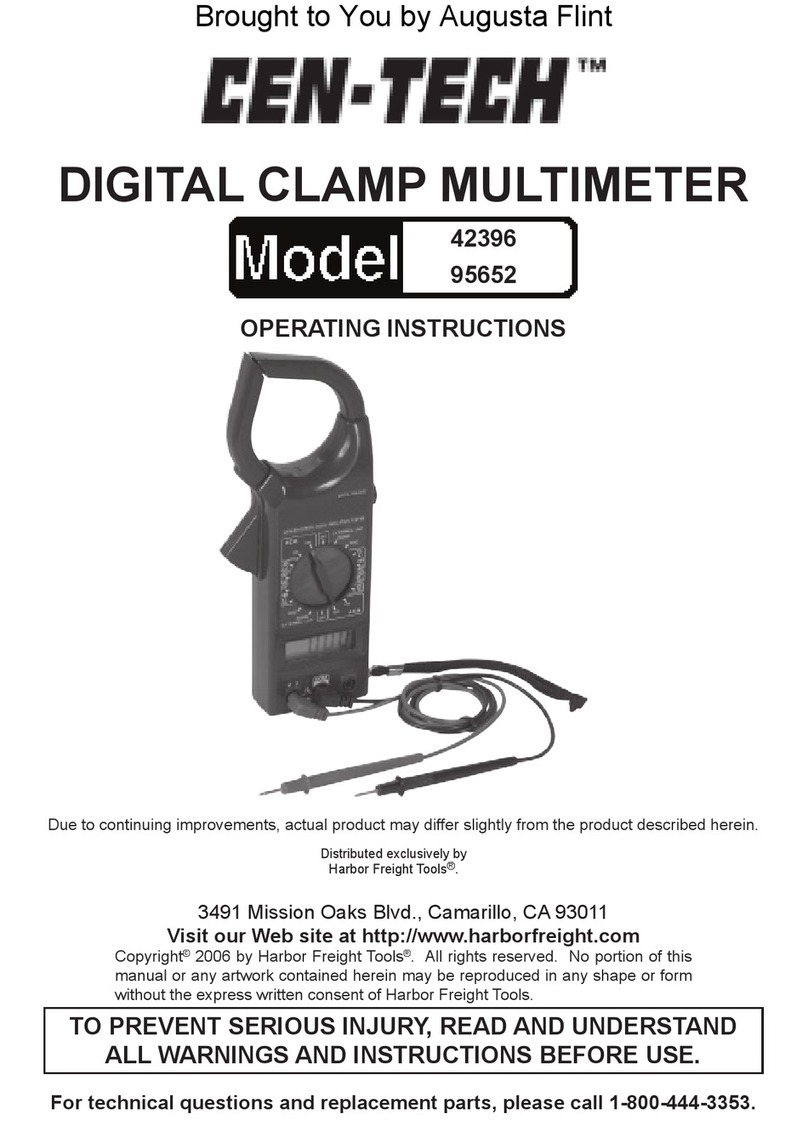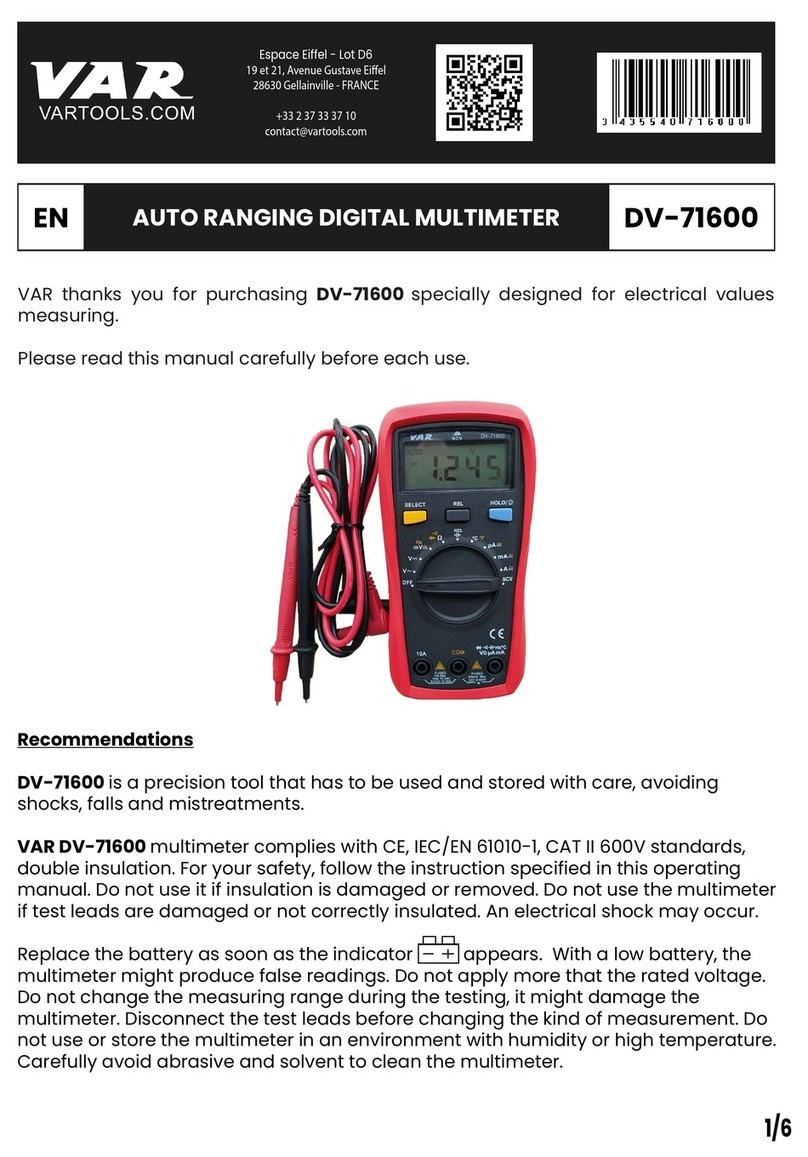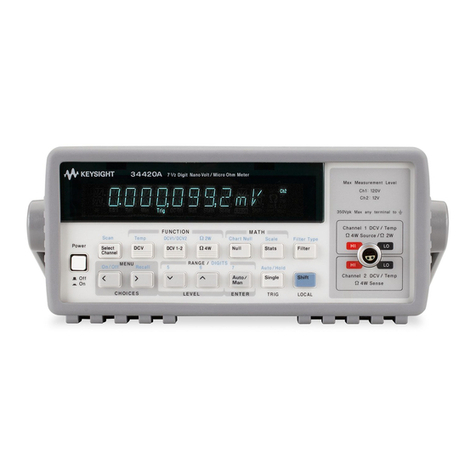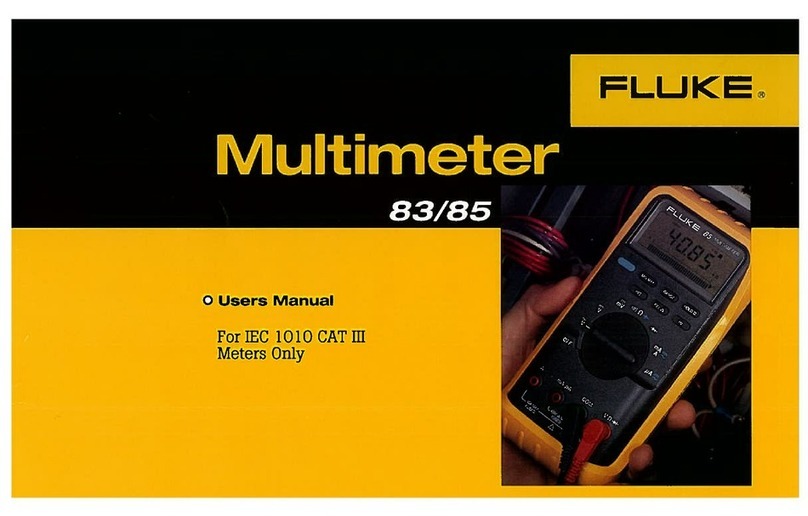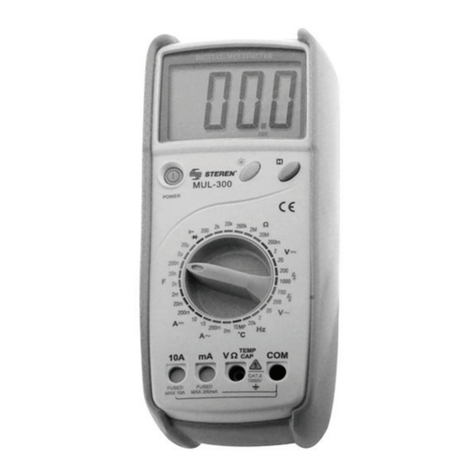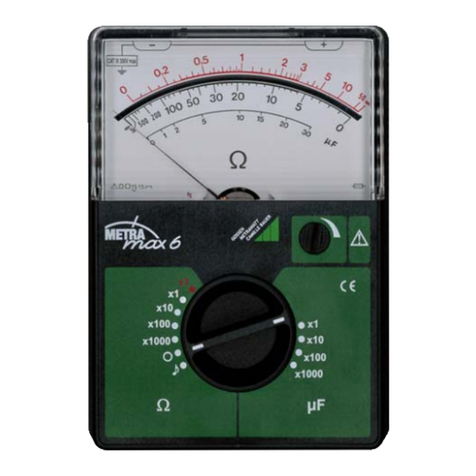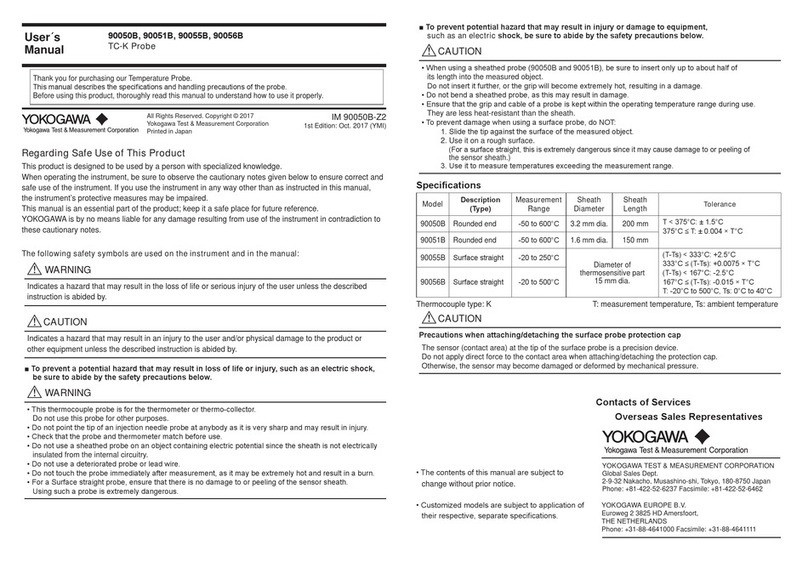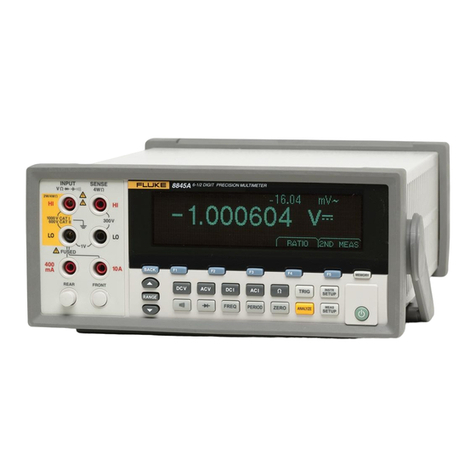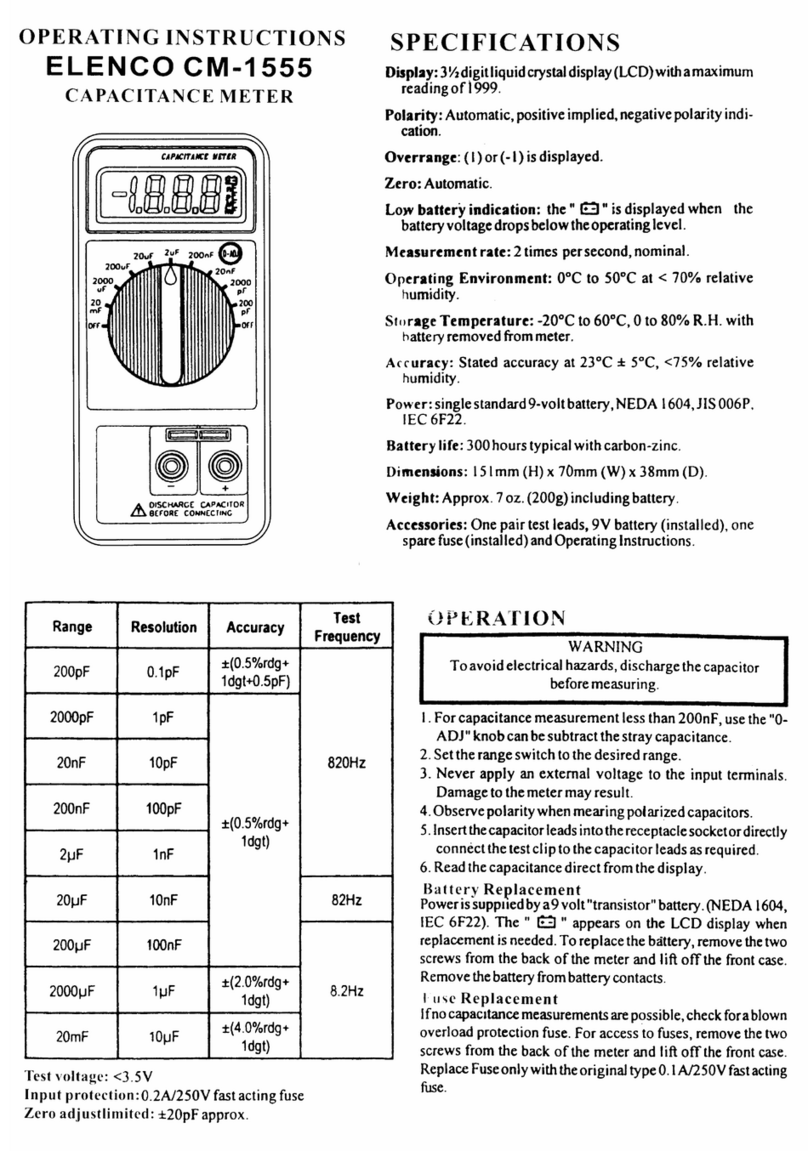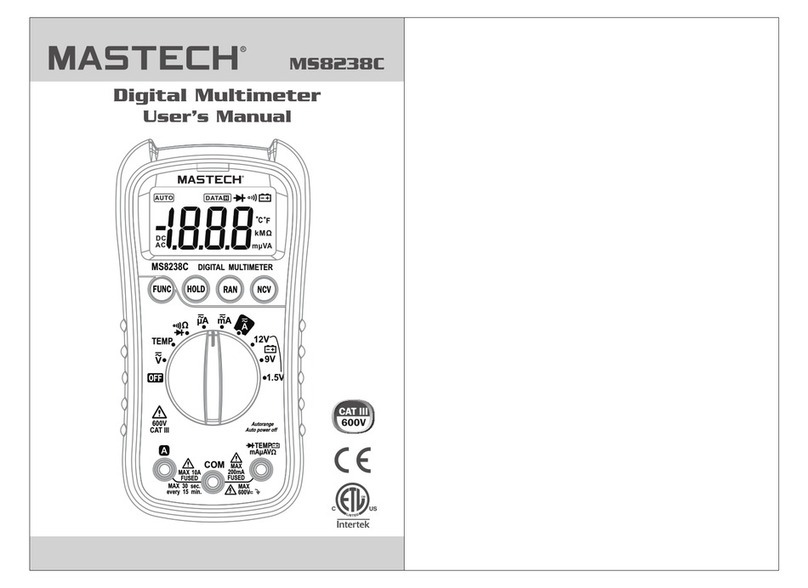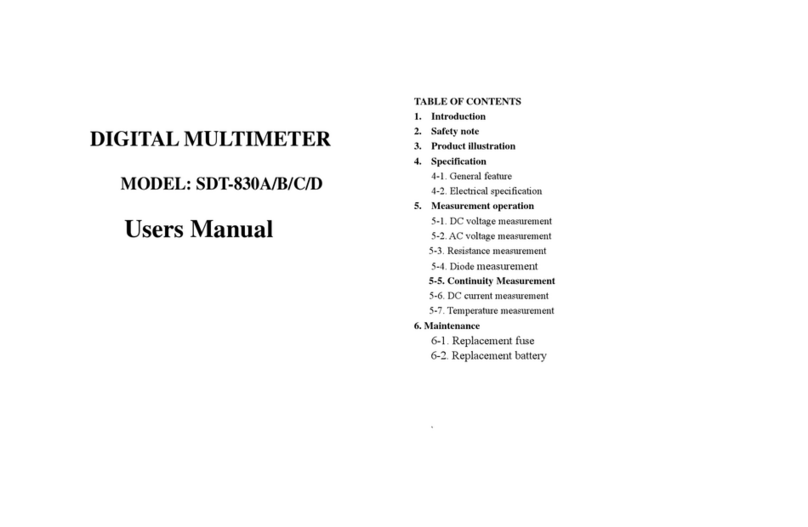SKU90926 Page3
For technical questions, please call 1-800-444-3353.
such as pipes, radiators, ranges, and cabinet enclosures when testing volt-
ages.
4. Avoid damaging meter.Use only as specified in this manual.
5. Observe work area conditions. Do not test circuits in damp or wet loca-
tions.Don’t expose to rain.Keep work area well lit.
6. Keep children away. Children must never be allowed in the work area. Do
not let them handle machines, tools, or extensions cords.
7. Store idle equipment. When not in use, tools must be stored in a dry
location to inhibit rust. Always lock up tools and keep out of reach of chil-
dren.
8. Dress properly. Do not wear jewelry as an accidental brush may cause a
short circuit causing electric shock or severe burns. Protective, electrically
nonconductiveclothesandnonskidrubber-soledfootweararerecommended
whenworking.Wearrestrictivehaircovering tocontain long hair.
9. Use eye protection. Alwayswear ANSIapprovedimpact safetygoggles.
10. Do not overreach. Keep proper footing and balance at all times. Do not
reach over or across electrical cables or frames.
11. Maintain tools with care. Ensure multimeter has a fresh battery. Inspect
toolcordsperiodically and,ifdamaged, havethemrepaired byanauthorized
technician.
12. Stay alert. Watch what you are doing, use common sense.Do not operate
any tool when you are tired.
13. Check for damaged parts. Before using any tool, any part that appears
damaged should be carefully checked to determine that it will operate prop-
erly and perform its intended function. Check for alignment and binding of
movingparts;anybrokenpartsor mountingfixtures;andanyother condition
that may affect proper operation.Any part that is damaged should be prop-
erly repaired or replaced by a qualified technician. Do not use the tool if any
switchdoes notoperate properly.
14. Accessories.Onlyuseaccessories intendedforusewith thistool.Approved
accessories areavailablefrom HarborFreightTools.
15. Do not operate tool if under the influence of alcohol or drugs. Read
warninglabels onprescriptions todetermine ifyour judgmentor reflexesare
impaired while taking drugs. If there is any doubt, do not operate the tool.
16. Peoplewith pacemakers should consulttheir physician(s) before using
this product. Electromagnetic fields in close proximity to a heart pace-
maker could cause interference to or failure of the pacemaker.
In addition, caution is necessary when near the coil, spark plug cables,
or distributor of a running engine. The engine should always be off if
adjustments are to be made to the distributor.
